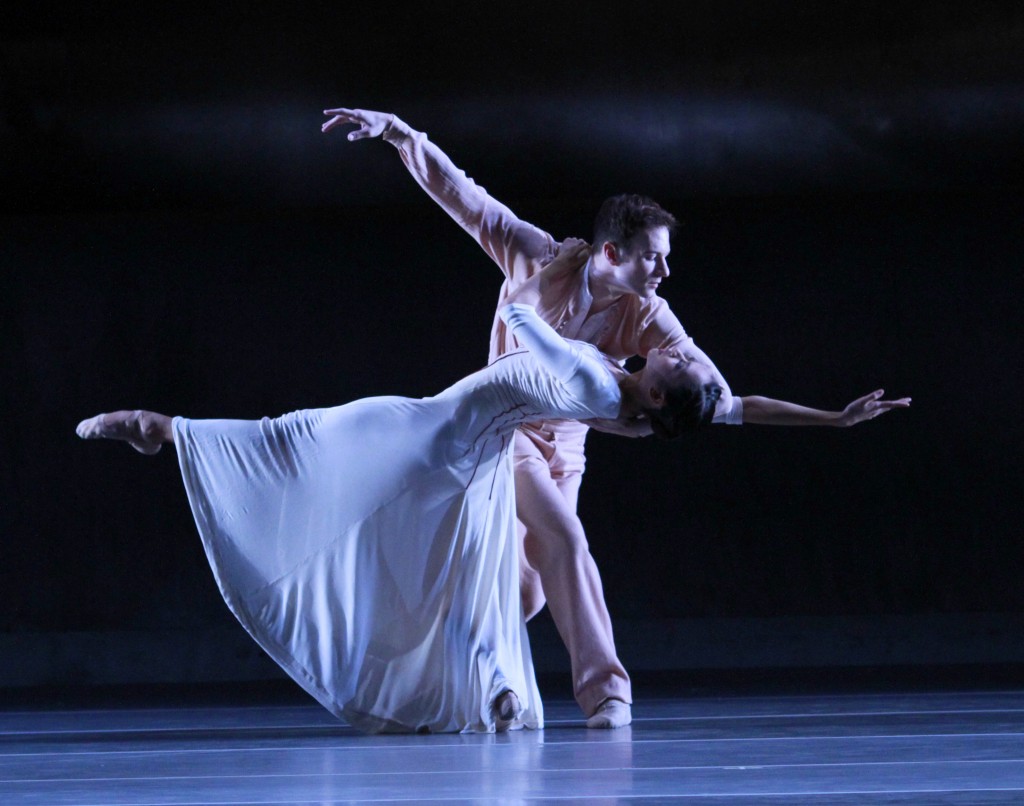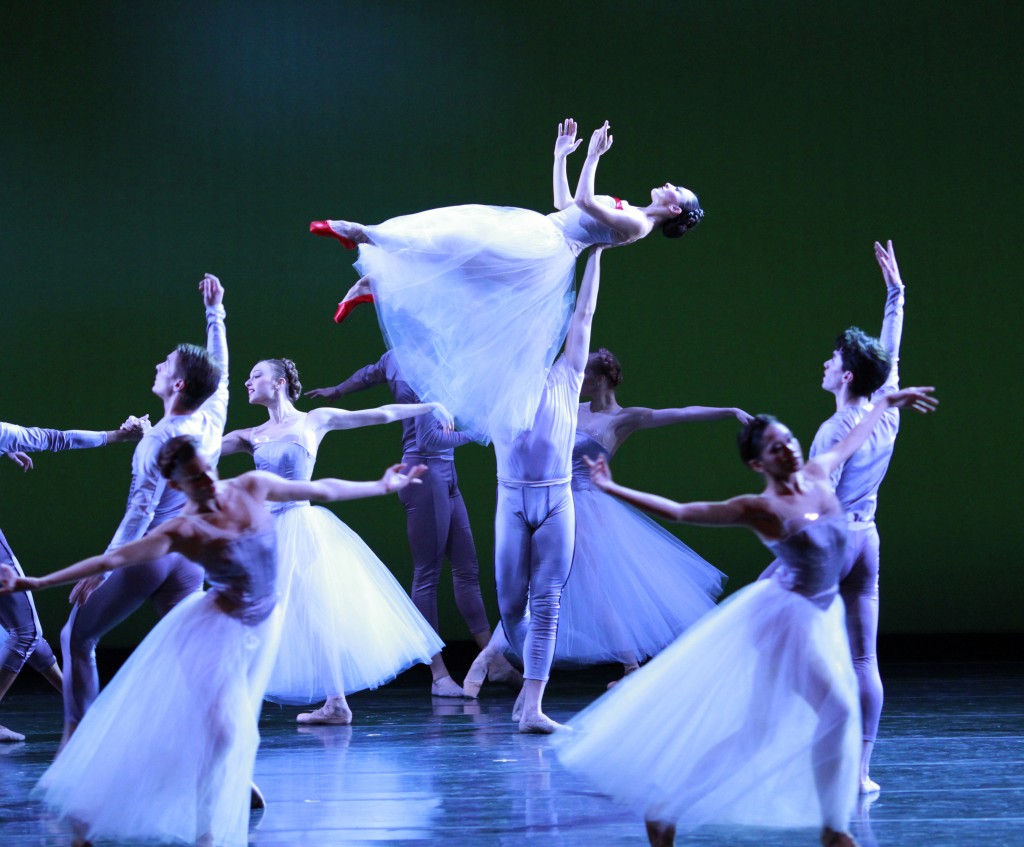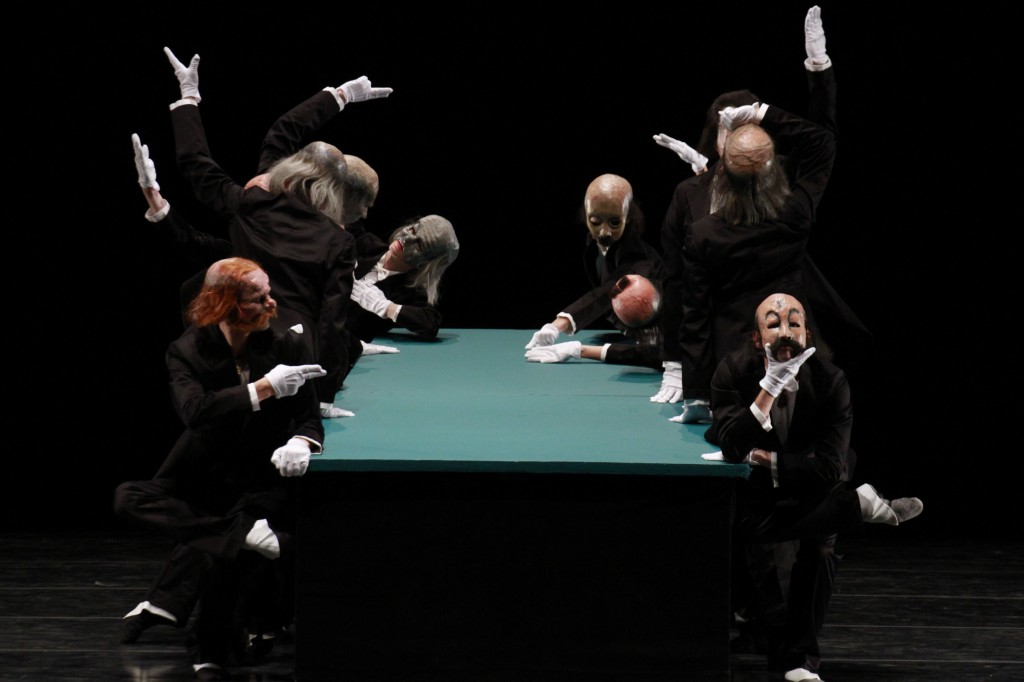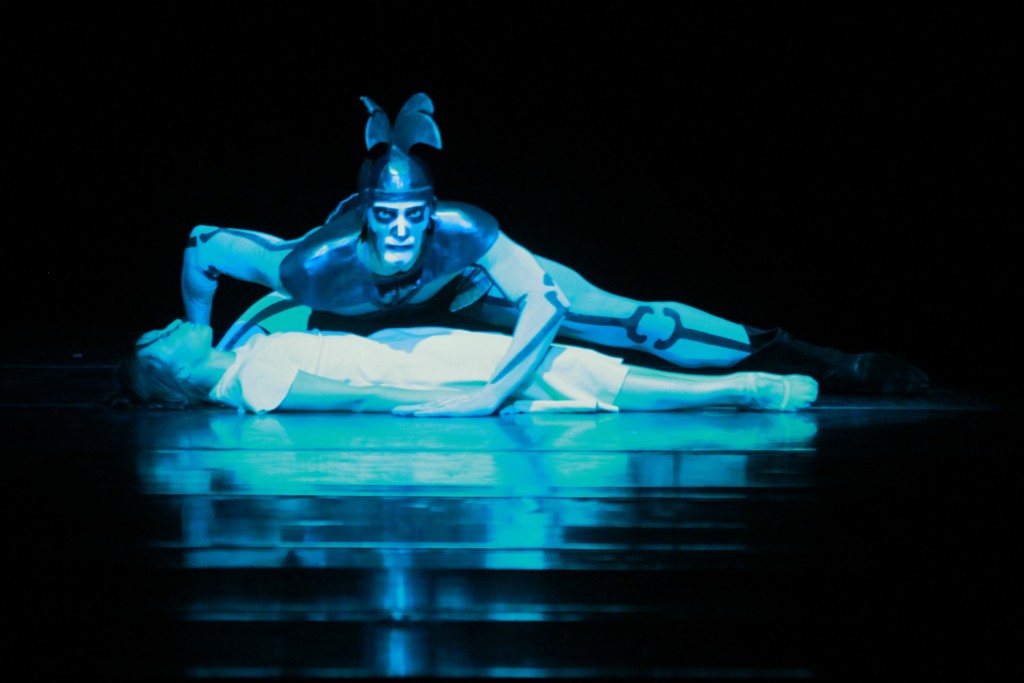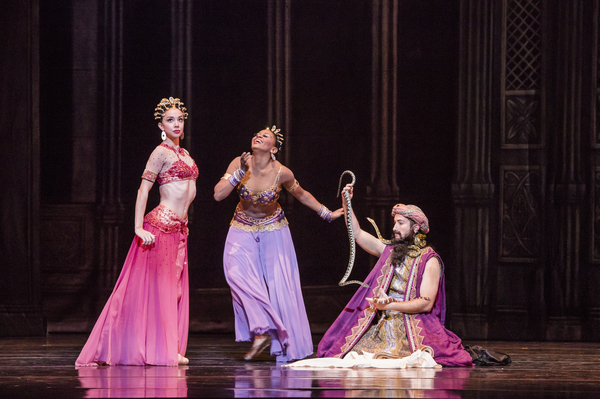
by Catherine L. Tully
Even when choosing a large-scale ballet Joffrey is unique–and “La Bayadere” is certainly a bold choice. The ballet was first performed in 1877 at the Bolshoi Theatre in St. Petersburg, and it was choreographed by Marius Petipa. This version has been updated by Houston Ballet’s marvelous Stanton Welch, and it is easy to see why he is one of the most sought after choreographers of our generation. He has the ability to create such interesting movement that one wishes they had two sets of eyes to see it all–especially when the stage is filled with dancers.
Although the three-act plot seems convoluted, at the center of it all it’s really just a tragic love triangle between Nikiya (the temple dancer, Victoria Jaiani), Solor (the warrior prince, Dylan Gutierrez) and Gamzatti (the Rajah’s daughter, April Daly). The first act is set in India and it traces the forbidden love story of Nikiya and Solor–and the plot to bring about her death, crafted by Gamzatti and her servant Ajah.
Jaiani is achingly supple–offering her submission to Solor with tender, fluttering arms and yielding bends of the torso. Gutierrez, although an able partner, was at his best when soaring and bounding across the stage with passionate abandon.
Welch’s choreography is both brilliant and difficult with demanding lifts, whiplash turns and unexpected combinations. In the first act, the dance for the four men was especially impressive, but the group dancing was also a joy to watch. Instead of tutus, tights and tiaras there are dazzling bras and colorful, flowing fabrics everywhere. The bright, jeweled costumes and lush scenery by Peter Farmer add quite a bit to the visual appeal of this ballet and Scott Speck and the Chicago Philharmonic added depth and drama with their mastery of the musical score by Minkus.
Fabrice Calmels is the perfect choice for the High Brahmin–radiating authority and confidence and dominating the stage with his presence. Also compelling were the musical John Mark Giragosian as Agni the Fire God and Erica Lynette Edwards as the maniacal Ajah.
The second act is set at the palace gardens as the wedding preparations for Solor and the princess Gamzatti take place. Daly was spectacular as she whipped off a triumphant series of fouettés and Jaiani was limp and heartbroken as she danced before the couple prior to her death.
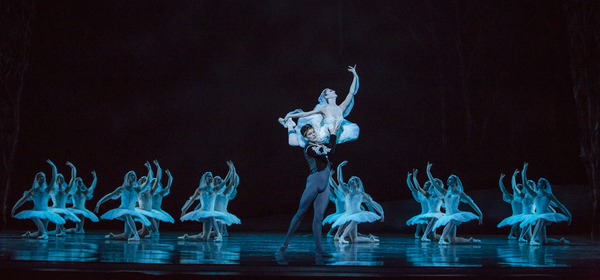
The beginning of the third act is in stark contrast to the color and vibrant atmosphere of the other two–especially in the “Kingdom of the Shades” where women in all white tutus–ghostly images–dance in unison. One by one these figures come down a long ramp in arabesque, balancing, bending back, balancing again. A trance-like scene, this is where Joffrey was at its most impressive. With only a slight sway or quiver here and there, the company triumphed over one of the more difficult corps de ballet scenes in classical ballet. They moved as one.
The three “shade solos” were all danced with verve. Cara Marie Gary bounced fluently, Amber Neumann floated lightly and Amanda Assucena’s solid balance and incredible extension appeared effortless.
Once Solor returns to reality the end of this ballet becomes a whirlwind–exciting and dramatic, if somewhat frenzied after the otherworldly scene before it.
La Bayadere runs through October 27th at the Auditorium Theatre in Chicago.





